In 2001, fashion week began with big budgets, colorful collections and extravagant parties. It was a much anticipated season – fashion magazines had predicted it to be the biggest yet.
But on the morning of its fifth day all of that changed.
In this episode, we go back in time to look at how the fashion industry reacted to the September 11 attacks. We wanted to know, during times of social and political disruption, is fashion a distraction or is there something helpful — perhaps necessary — about it?
From the 9/11 attacks, to war, to a worldwide pandemic, how does fashion reflect the time we live in?
To find out, we talked to designers Kenneth Cole, Liz Lange and Adam Lippes among others. Does fashion reflect society? Does it have the power to soothe and help heal crisis driven era’s?
TRANSCRIPT
KATIE COURIC: This morning on today’s Style Fashion week, twice a year the world’s biggest designers descend upon New York City to unveil the next season’s newest looks to the international media.
AUDIO OF TODAY SHOW UNDERNEATH NARRATION
NATHALIA ALCANTARA: It’s September 10, 2001, The day before 09/11.
Katie Couric stands outside of the Today show studio in Rockefeller Plaza.
She is near a huge plastic tent, where one of the big fashion shows is about to happen.
KATIE COURIC: Designer Kenneth Cole will reveal his spring 2002 lines.
EMILY EKSHIAN: Katie Couric goes inside the tent to interview Kenneth Cole
KATIE COURIC: Good morning. Nice to see you.
EMILY: It’s 8:46 AM: exactly 24 hours before the first plane hit the North Tower of the World Trade Center.
Kenneth Cole is expecting NBC to go live with his show.
KENNETH COLE: But we had to spend a lot of money to build a tent and to set up the whole thing and I said, “Is there any scenario where you don’t go live when we do?” And they said, “No, there is maybe if there’s a shark on Joan beach, we you know, you’ll get cut out of the eight o’clock hour but you’ll still be in the nine o’clock hour.”
AUDIO OF TODAY SHOW UNDERNEATH NARRATION
NATHALIA: Behind them, a crowd of models, producers and stylists move shoulder to shoulder between racks of clothes.
KATIE COURIC: You can get a shot of all the chaos that…
NATHALIA: As it happens during most fashion shows, there is a flurry of last-minute activity.
TODAY SHOW: It’s a little chaotic back here…
NATHALIA: Of course, they have no idea that the next day the word “chaos” would have a whole different meaning.
MUSIC IN
EMILY: New York Fashion Week Spring Summer 2002 is a much anticipated season.
Fashion magazines predict it to be the biggest yet.
It starts out that way.
NATHALIA: But in less than 24 hours all of that changes.
KENNETH COLE: All the network’s shut down and nobody ever could have ever anticipated this and the press about our show was never read by anybody because the newspapers whenever they circulated the next day,
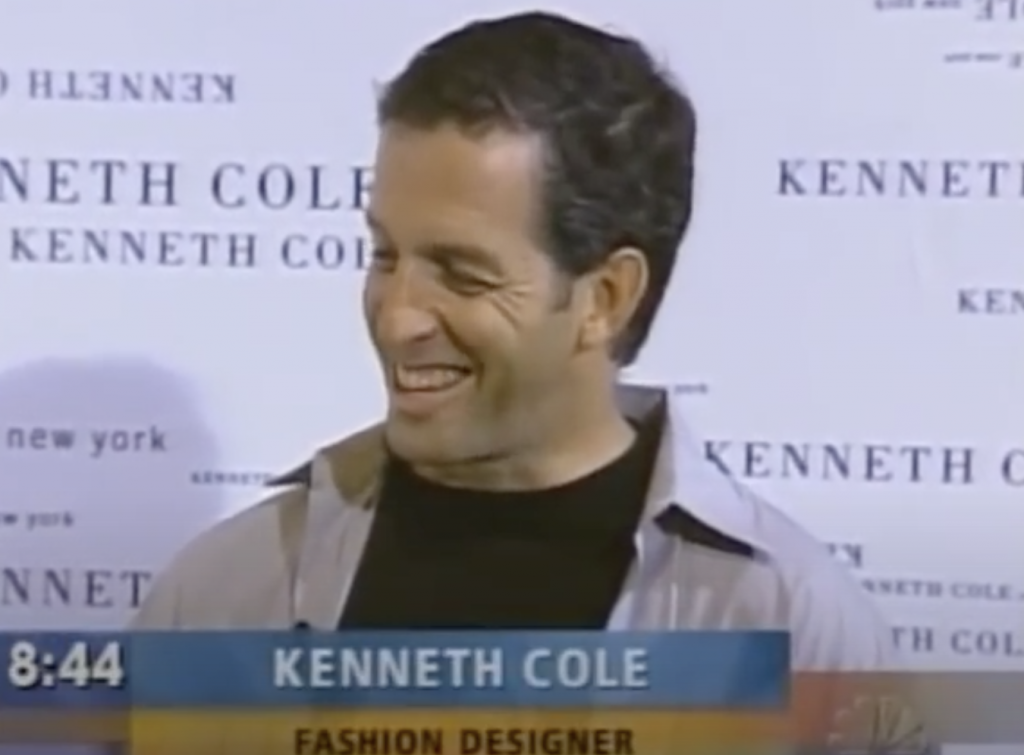
MUSIC OUT
KENNETH COLE: How quickly something can change so profoundly, is extraordinary.
SHOE LEATHER SQUEEGEES THEME IN
NATHALIA: I’m Nathalia Alcantara
EMILY: And I’m Emily Ekshian
NATHALIA: This is Shoe Leather, an investigative podcast that digs up stories from New York City’s past to find out how yesterday’s news affects us today.
EMILY: This season we’re focusing on the day before 09/11.
September 10, 2001 was just another Monday for most Americans.
At the Today show, headlines ranged from a shark attack story, and a moderate earthquake on the West Coast, to a story on how to measure your child’s athletic potential
NEWSREEL: “How do you really know if that child had what it takes?”
NATHALIA: There’s also a lot of uncertainty about the economy.
TODAY SHOW: How low will stocks go with troubling economic news, anemic growth and rising unemployment?
NATHALIA: And fashion designers are paying attention to what’s going on
Like Carolina Herrera, who says when the economy falls, skirts go up….
CAROLINA HERRERA: So I have I have short skirts, which we are showing lots of legs to make people happy.
EMILY: In this episode, we go back in time to look at how the fashion industry reacted to the attacks.
NATHALIA: We want to know: during times of social and political disruption, is fashion a distraction or is there something helpful—perhaps necessary—about it?
09/11 NEWSREEEL
From the 9/11 attacks…
09/11 NEWSREEL
EMILY: To war…
IRAQ WAR NEWSREEL
NATHALIA: To a worldwide pandemic…
COVID-19 NEWSREEL
EMILY: How does fashion reflect the time we live in?
NATHALIA: This is Shoe Leather season three, “The Day Before.”
EMILY: You’re listening to “That’s so 09/10.”
SQUEEGEES THEME MUSIC OUT
THE PARTY
EMILY EKSHIAN: In 2001 Fashion week began with big budgets, colorful collections and extravagant parties…
BEN WIDDICOMBE: Everybody who was anybody wanted to be there.
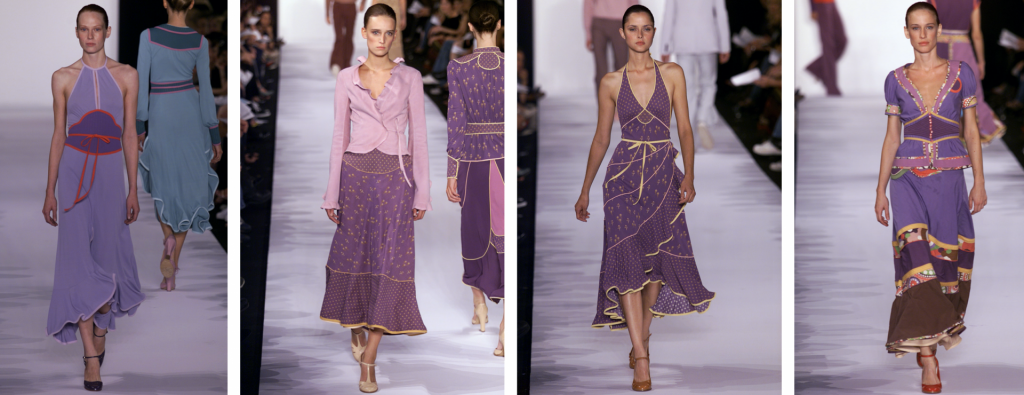
Credits: Shoot Digital for Style.com
EMILY: Ben Widdicombe is a journalist and fashion gossip columnist. He has spent more than twenty years reporting on New York’s high society.
And on the night of September 10th, he was where everyone wanted to be…
BEN WIDDICOMBE: The Marc Jacobs show was a very big deal. I remember he had both men and women working together which wasn’t necessarily usual. He had a lot of big stars a lot of big models with Eric Karolina Kurkova. He had a lot of floral prints. It was a very pretty collection. He came out to thunderous applause. And then he applauded back, which is what the designers did at the time. And in the audience were a huge number of celebrities. There was only Cassavetes and David Copperfield, Natasha Leone, the actress, I saw Tina Brown talking to Donald Trump and his girlfriend Melania now so at the time it was before they were married. And of course Sarah Jessica Parker also there on the front rows.so it really was a big deal.
NATHALIA ALCANTARA: Mickey Boardman was there too.. He’s a magazine editor and a designer
At the end of the show, he remembers, there was a surprise.
MICKEY BOARDMAN: I can’t remember if it was a curtain or something opened behind Marc Jacobs at the end of the runway. And there was the after party
MUSIC IN
NATHALIA: Marc Jacobs held a grand candlelit party to celebrate the launch of his very first fragrance
MICKEY BOARDMAN: And you could see the whole Skyline including the World Trade Center. I remember my friends and I talking about how they had those fire department boats that shoot the hoses, and it had been raining. So it was I remember girls in their high heels kind of stepping on the wet grass and it was kind of hard to walk on.
EMILY: On that night, Mickey looked at the lights of the World Trade Center, shining to the south from the party.

MICKEY BOARDMAN: I kind of felt that it’s great to live in New York and to be in fashion and to be able to go to these kinds of amazing things.
It was such a beautiful, fabulous photo. And such a moment in time that that we all woke up the next morning and that kind of was all gone.
MUSIC OUT
PAUSE
NYFW SPRING/SUMMER 2002 CANCELLED
EMILY EKSHIAN: September 11, 2001, had been circled on Liz Lange’s calendar for months.
CNN TAPE BUBBLE
EMILY: She is a fashion designer. And on that morning, at 9am, she was presenting the first ever maternity fashion show at New York Fashion Week.
GAIL: Here we have the designer Liz Lange herself. Liz tells me why is it so important for women to shop for this very small window of their lives?
LIZ LANGE: Because you know what? It’s not such a small window it’s nine months and then it’s a few months ….
EMILY: At the time, pregnant women had little choice but to wear the so-called mommy core uniform: Tent-like shirts, shapeless dresses, poorly cut sweatpants…
NATHALIA ALCANTARA: Liz Lange wanted to change that.
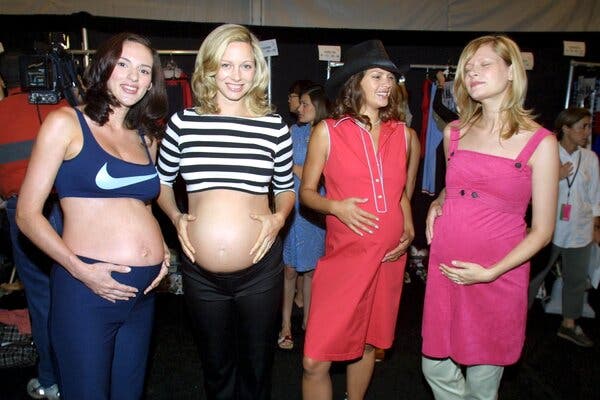
Credits: The New York Times
MUSIC IN
NATHALIA: She had been working for years to create a line that is just as sophisticated as any of the major women’s ready to wear brands. From the look, the feel, the cuts, to the models that strut her collections.
LIZ LANGE: So I thought the ultimate way to do that was also to have a fashion show just like all other, you know, other designer brands have huge fashion shows. So, at the time again, the brands that were very popular I was looking at like Michael Kors, and Gucci and all those Prada… And I just wanted to be like that.
MUSIC OUT
EMILY: Liz is 56 years old now – a household name in the fashion industry. But back then she was just starting out.
In the early 90s, Liz worked as an editorial assistant at Vogue magazine.
LIZ LANGE: “It was a, you know, beginner’s job. It was my first job out of college and I was working for an editor.”
EMILY: That’s when she met Stephen Digeronimo, a young designer whose work inspired her to enter the business of fashion.
LIZ LANGE: “So I left my job at Vogue and I went to work for him. And while I was there, out of necessity, because he didn’t have any employees, I was the only one. I kind of learned the business because I did everything. So whatever needed to be done, I did it. I sourced fabrics. I was younger and thinner than I was also the fit model. I helped him do his shows. I showed him designs that I thought my friends and I in our early 20s would be interested in wearing to help him with his designing. But I didn’t consider myself a designer. Definitely, definitely not.”
NATHALIA: About two years later, Liz started to see many of her pregnant friends struggling to find stylish clothes.
She realized maternity wear needed a revolution, but she didn’t think she would be the one to make it happen.
EMILY: She suggested Digeronimo, the designer she worked for, to do a maternity line. But he wasn’t interested.
So, eventually she decided to start the line herself.
MUSIC IN
EMILY: In 1997, Liz took a loan from her family, made some samples, and shared her designs with friends and celebrity publicists.
The business grew fast. Three years later, Liz had a shop on Madison Avenue, in Beverly Hills and in the Miracle Mile on Long Island.
NATHALIA: Then, she wanted her next step to be a Fashion Week Show.
LIZ LANGE: in order to have a show at Fashion Week, at least in the United States, you have to be a member of the Council of Fashion Designers of America, known for short as a CFDA. So I applied to join the CFDA, which actually isn’t easy either.
NATHALIA: To her surprise, she was accepted. Still, she had to pay for production and a fashion show in the early 2000s was very expensive.
Her company was doing well, so she made the investment. After all, a show would be a major platform for marketing.
EMILY: Finally the big day came – September 11th,
PAUSE
At 5AM, Liz arrived in Bryant Park, where most of the shows were happening.
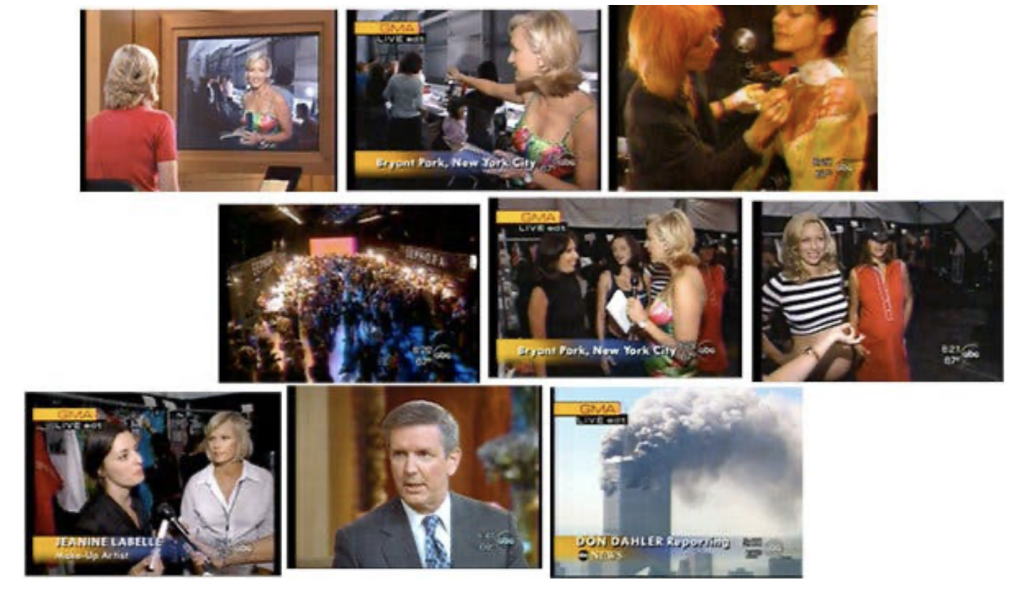
LIZ LANGE: It was crazy, because you know it’s pitch black out. But the tent is already buzzing because I’ve got all these models there.
EMILY: Then, the press arrived.
LIZ LANGE: It felt almost like that moment that I see celebrities having when they’re on a red carpet, and there’s so many photographers screaming, like over here, over here, look over here, you know, and there’s all these flash balls. That’s sort of what it felt like to be backstage that morning.
EMILY: But Liz stopped giving interviews to keep her focus on the show – she fixed the looks and checked the models’ hair and makeup. After all, she thought, there would be tons of time after the show to do more interviews.
LIZ LANGE: So, I’m watching the show from the curtain backstage. And I see all the press, and there is so much press between, you know, the electric media, which is what we used to call all the TV stations, and then all the photographers and the print media, everybody’s there to total media circus.
NATHALIA: Up until that point, everything was going according to plan. But, then, as Liz looked from behind the curtains, she noticed something weird…
LIZ LANGE: I notice that the CNN camera crew, they seem to go running out of the tent, like they leave the show, they go running out. And then I see some other people are leaving, and I’m so confused. And I’m thinking like, why, you know, this is not what I signed up for. Like, I’m mad at my publicist. I’m thinking like, what did they have something else to cover this morning? But like, you know, they’re not staying for the whole show, the show only lasts 10 or 15 minutes. So but I had no, I mean, no clue, like no idea at all.
EMILY: As soon as the last model left the runway, things got even more strange.
LIZ LANGE: And I noticed that the guards are just pushing everybody outside the tent. There’s like, basically like screaming, like, ‘clear out the tent, there’s a tent everyone has to go to.’ And I am arguing with them. I am saying ‘no, that’s not the way it works. Like we have a full hour afterwards where I’m supposed to do interviews where people are coming backstage, like, why are you making everybody leave?’ And they’re not even answering. I mean, they probably don’t even know why they have probably been told that I have no idea. So they’re clearing out the tents. I am arguing with my publicist, like what is going on? Like this is not we paid all this money. Like, look, you know, this doesn’t make any sense. Like I’m not obviously I didn’t feel like saying once I understood that, but I didn’t understand.
EMILY: Of course, the news didn’t travel as fast then as it does now, in 2022. Nobody had newsfeeds on their phones, or social media.
So, Liz wandered around, confused, and finally realized what was happening.
MUSIC IN
NATHALIA: She heard that a small plane had hit the World Trade Center. But she had no idea how serious it was. She had been in her tent – her bubble – most of the morning.
But then she steps outside – she is basically forced to by security guards.
She realized that not only is her show over, New York City is a totally different place.
LIZ LANGE: I was in very high heels, of course, because I was dressed for my show and for this very glamorous event, but there was no way there was nothing working like you couldn’t get a taxi, there were no Ubers back then. But you couldn’t, everything was just chaos, of course. So I got on a bus, I got on the bus and people were screaming things like, like, oh, another, another plane just hit the White House, another plane just hit the Supreme Court, it turned out that none of that ended up happening. But we didn’t know where the bottom was. We felt like the entire world, anything could happen. And like, no, no place was safe.
EMILY: New York Fashion Week, like the rest of the country, stopped.
NATHALIA: The remaining seventy-three fashion shows were canceled, and the industry was frozen.
MUSIC OUT
LIZ LANGE: Just like was like an innocence that died, like an innocence and a lightness that just died.
PAUSE
THE SHOW MUST GO ON.
EMILY EKSHIAN: Designer Oscar De La Renta had his show scheduled at noon, right after Liz Lange.
ADAM LIPPES: models were coming in crying, because they had seen that they’ve come a lot and were living in Tribeca, and they had seen something horrible happen.
EMILY: That’s Adam Lippes. Back then, he was Oscar De La Renta’s creative designer. Now he has his own luxury brand.

Credits: William Waldron
NATHALIA ALCANTARA: De La Renta’s show, of course, was canceled. And Adam Lippes went home, He watched the news from his apartment.
ADAM LIPPES: I was on the phone a lot. And within I would say 48 hours Mr. De La Renta wanted to show again. And I was sort of horrified by the prospects. Because you know, it was so scary, but he was like “these people will not win. We must go on.” And so we wound up. I called some of the agents, the model agents that I knew, and we decided to do sort of a small show in our showroom.
EMILY: But the fashion show was very different from what was planned for 09/11.
ADAM LIPPES: It was very sad, it was the most beautiful collection. And it was just we showed it without music. Everyone wore armbands out of respect. It was very small, obviously. I mean, a fashion show without music, you know, already is strange. And it was just sort of very, maybe there were 50 people 75 People in the showroom instead of an Oscar, we used to seat maybe 1500 people at a normal show back in the day. So it was a very solemn experience. But it was great. Oscar was right, that we had to continue on. And and we did so we were the first show to show again.
EMILY: In the weeks following 09/11, other big designers like Ralph Lauren and Donna Karan also did small presentations in their own studios.
They could afford it. These big names have their own showrooms to hold their fashion shows and the influence to get people to show up.
NATHALIA: But for smaller designers, the situation is very different—they can’t reschedule their shows.
It’s worth pausing here to understand why designers even do fashion shows.
MUSIC IN
NATHALIA: It’s mostly about buyers: people who represent department and chain stores, as well as smaller boutiques. They go to fashion shows looking at trends and deciding which products they want to stock and sell at the stores they represent.
Designers do fashion shows because, if everything goes well, orders start to come in days—sometimes weeks– later.
EMILY: Also, depending on how much press there is, designers save tons in PR money because of the attention they often get. Remember how excited Liz Lange sounded about all the press on her show? That’s because she could see her investment paying off.
So, when designers decide to do a fashion week show, they are essentially making a big bet.
They are paying for the venue, the models, makeup artists, production…all of that hoping that the show will bring some return later down the road.
For emerging designers, who don’t have tons of money to spare, it can be a make it or break it situation. If it works, they get their names on the map. If it doesn’t, they can get in financial trouble.
MUSIC OUT
EMILY: So, in the aftermath of the attacks, designers had to face the fact that their huge investments would not return.
Here’s Liz Lange again.
LIZ LANGE: I always hesitate to say this, because this is not the tragedy of 9/11. I’m not even close to pretending it is or thinking it is. But since you’re asking me very specifically about that, yes, it was kind of a disaster for business, the deals that we had on the table that was supposed to happen, different buyers that were in town, from Japan, from the UK, from Europe, they all left and those deals never never materialized.
NATHALIA: Anna Wintour, the editor-in-chief of Vogue, decided to take action.
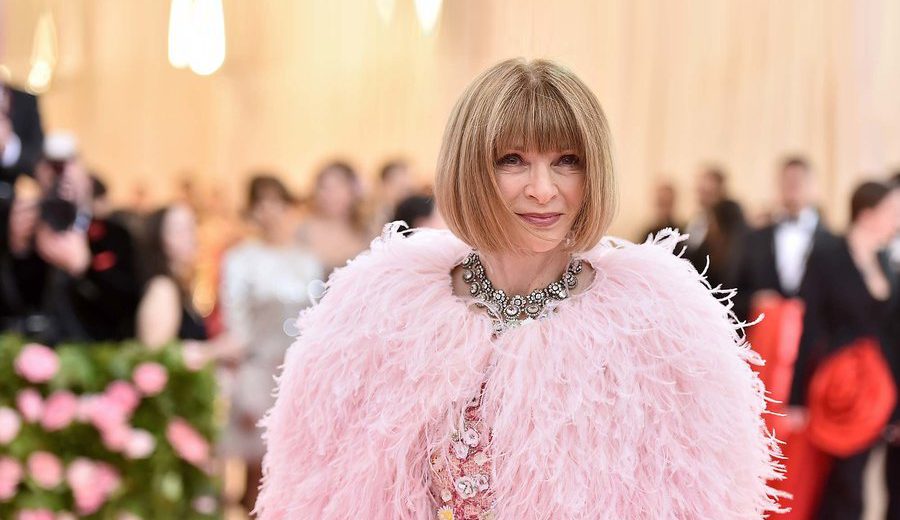
Credits: Ocean World BLUE.
A little more than a week after the attacks, she helped organize a show named “An American View” – a group show for emerging designers who had their events canceled.
Carolina Herrerra donated the venue, her Midtown Manhattan showroom. Models and artists donated their time.
And like De La Renta’s post 09/11 show, there was no music. The show’s producer told the New York Times that all the audience could hear were the footsteps of models walking down the runway, and the clicks of the cameras.
EMILY: 09/11 brought people in the fashion industry together— which is out of the ordinary, according to people in the business.
But they had too, to save new designers.
MUSIC IN
NATHALIA: But fashion’s next move was trickier….
How does it respond when an entire nation is grieving – when it’s on the cusp of war?
When shopping for clothes is one of the last things people are thinking about…
MUSIC OUT
PAUSE
HOW DID 9/11 IMPACT FASHION & WHAT PEOPLE WEAR?
EMILY EKSHIAN: While high fashion struggled with what to show – people on the street were already reacting to a changing time. Fashion Journalist Ben Widdicombe started to see signs of this right away.
BEN WIDDICOMBE: there was a kind of ubiquitous t-shirt that you would see a bit of the time called “defend Brooklyn.”
And underneath those two words was a picture of an AK 47 assault rifle. And like the cool hipsters would wear that, just to show how edgy they were. And I can tell you, I didn’t see a defend Brooklyn t – shirt, if I want to say for 15 years after 911,
MUSIC COUPLE OF BEATS
though it was quite popular before. On that day, they went into drawers. anything that referenced violence or death immediately went away. People stopped wearing little dagger earrings, people stopped wearing skulls, you know, which is a relatively common fashion approach especially among people with a bit of an edgy or punk sensibility, all that stuff went away. No one wanted any kind of death imagery in New York City.
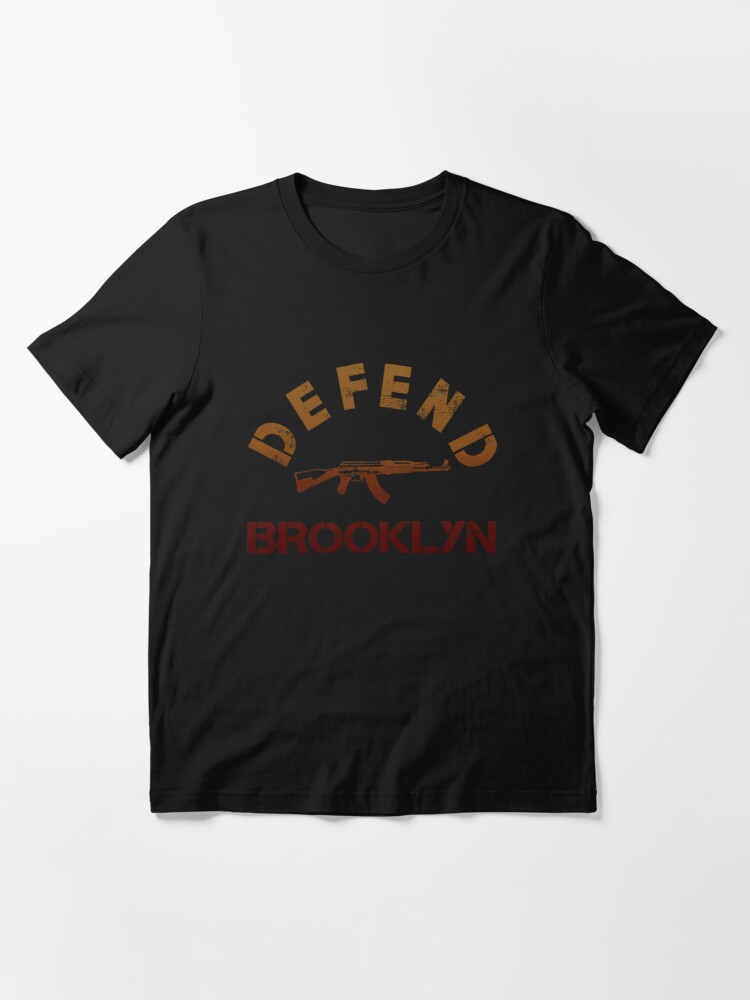
EMILY: The attacks and aftermath had social and political implications – all of which impacted the way people expressed themselves.
Islamophobic sentiment spread across the country, and Muslim women who wore a headscarf in the United States found themselves targeted.
Shelby Ivy Christie is a fashion historian.
SHELBY IVY CHRISTIE: A lot of Muslim hate, ignorance came out of, of that historical event, that terrorism attack. So I think that probably is what the output of that was, as far as fashion is concerned. If you talk to someone who openly practices dress in a more conservative way, and Islamic during that time, sure, they felt self conscious about their traditional or religious wear.
PAUSE
NEWSREEL – PRESIDENT BUSH: My fellow citizens, at this hour American and coalition forces are in the early stages of military operations to disarm Iraq and to free its people, and to defend the world from great danger.
NATHALIA ALCANTARA: Not long after the attacks, America prepared to go to war.
MUSIC OUT
ADAM LIPPES: it was a bit of a dose of reality. I think for our industry.
That’s Adam Lippes again – The designer who worked with Oscar De La Renta
ADAM LIPPES: we are showing bone embroider ballgowns, and we’ve just had a terrorist attack and we’re going to war like, what are we doing? And you know, who’s buying what and from from what we were showing to what would our customer want in this time was a very challenging period for you know, the next while.
EMILY: That’s when people started using the expression – “that’s so 09/10.”
Here’s Mickey Boardman again, the editor and designer.
MICKEY BOARDMAN: I said it and other people said it too and it was just sort of for stuff that was kind of cluelessly indulgent on some level. You know what I mean? Fashion is kind of famous for that kind of thing.
EMILY: Tragedy can make fashion feel irrelevant, and at times even inappropriate.
Ben Widdicombe stopped updating his column, “chic happens.”
BEN WIDDICOMBE: Because we were a gossip column and, it wasn’t an appropriate moment to be writing about fashion gossip. And a lot of New York media had a similar response.
LIZ LANGE: prior to that, there would be a lot of fluffy coverage of fashion and on all sorts of news channels, all the stations, you know including CNN, would cover fashion.
CNN NEWSREEL: Leather, lace and everything in between. It’s all moving down the catwalk, and CNN’s Gail O’Neil, has been braving the crowd, morning Carol, I’ll tell you this is the biggest media crush I’ve seen so far.
After 911, that all changed. And you really couldn’t do any stories like that anymore. First of all, of course, all the coverage turned to 911. And then the Iraq war.
CNN NEWSREEL: At this hour, coalition forces seize a key slice of Iraq.
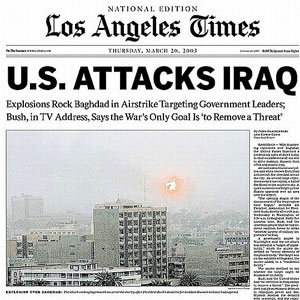
BEN WIDDICOMBE: the lighter stuff went away for a period of time for a few months.
NATHALIA: The American consciousness and conscience experienced a fundamental change after 9/11 – signs of it manifested itself in our everyday choices. Like the shirt we decide is no longer appropriate to wear, or the stories that are no longer relevant
GIULIANI TAPE BUBBLE
NATHALIA: New York was focused on rebuilding
BEN WIDDICOMBE: Particularly Giuliani, the mayor at the time, was really encouraging. Like to get back to normal, he was saying, Go shopping, go out and buy the fashion brands.
GIULIANI TAPE BUBBLE
BEN WIDDICOMBE: I was also working for a fashion magazine at the time called “Jalouse”. And the advertising all fell off after 911. So the catastrophe killed that magazine and a lot of other businesses as well. So it wasn’t just, you know, idle talk that you had to go out and resume economic activity, because a lot of businesses failed, including the magazine that I worked for.
EMILY: The economy took a turn for the worse.
20,000 small businesses were displaced immediately after the attacks on the towers.
And while New Yorkers were encouraged to shop and return to normal, the news were still grim
BEN WIDDICOMBE: There was so much bad news in the first half of the newspaper, because you have to remember the pile at Ground Zero burned for months and months afterwards. I mean, even in my house in the East Village, if the wind was blowing the wrong way, I was still on the smoke funnel. And the smoke was greasy and gross. And every time some new person was identified, it was in the newspaper. So this story didn’t go away, there were fresh horrors every day.
NATHALIA: It took months – but, eventually fashion made its way to the news cycle again.
BEN WIDDICOMBE: When it came back, it came back with a vengeance.
MUSIC IN
So the newspaper editors would say to the feature writers and the gossip writers, we need some liberty in the paper. We need you to report on the bright young things and what parties are they going to and who they are dating and what are they wearing? So there was a lot of encouragement from the media to get back to reporting some stuff that would give people a break from the horrible news.
EMILY: Fashion became a form of escape – a tool to forget about the horrors of the attacks
But it wasn’t detached from what was going on – it rarely is.
About six months after 911, a new type of celebrity emerged on New York City’s red carpets.
BEN WIDDICOMBE: Firemen were doubling celebrities in New York City. And any fireman could put on his dress uniform, you know, with the blue suit coat and the hat and the tie. And any red carpet in the city, any velvet rope would open for that man.
MUSIC OUT
EMILY: While fashion can be a tool to get away …
For some, it can be the opposite: a way to raise awareness about social issues – it can be activism.
Even before 09/11 – fashion has played a role – or at least tried to – in social change.
KENNETH COLE: FASHION AS ACTIVISM
EMILY EKSHIAN: Back on September 10 2001 – the day, Kenneth Cole was being interviewed on the Today show.
He was wearing a black shirt with the words “don’t shoot” stamped in white bold letters. On top of the phrase, the image of a gun, with a stop sign framing it.
KENNETH COLE: Last week, two people were killed from sharks is on the cover of every newspaper in the country. 250 people were killed by guns, and no one talked about it. And it’s become such an unfortunate reality about our culture today.
KENNETH KOLE’S INTERVIEW BUBBLE UNDERNEATH IN
EMILY: He wanted to use his fashion show to take on discussions of gun control.
KENNETH KOLE’S INTERVIEW BUBBLE UNDERNEATH OUT
NATHALIA ALCANTARA: It wasn’t the first time Kenneth Cole talked about social issues. He has a long history of using his brand for social activism.
For example, In the 90s, his company showed support for gay rights— it was one of the first fashion companies to do that.
Throughout the years, his ads touched on controversial issues— from presidential races to abortion.
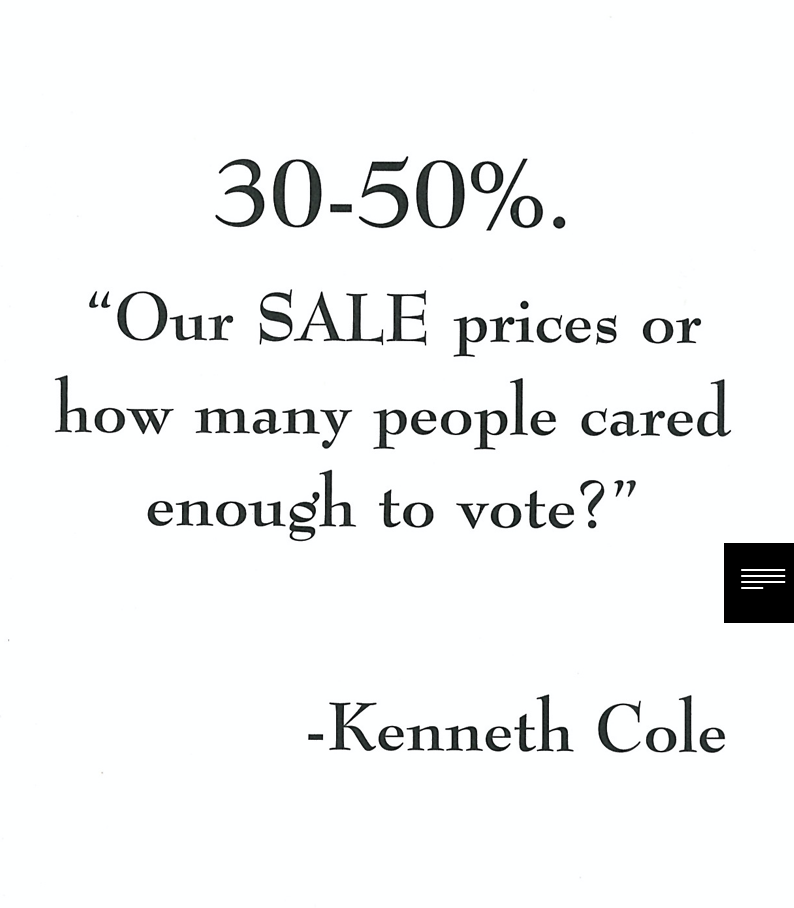
Credits: The Kenneth Cole Advertising Archive
EMILY: In April this year, Kenneth Cole once again found himself at the top of the Rockefeller center. The same place he was twenty years ago for his show the day before 9/11.
PAUSE
EMILY: But this time he is a guest speaker for a 2036 Emory University event.
AMBI OF THE EVENT IN
Emory alumni from all over the country fill the seats of the rooftop venue. They are all here to hear about Kenneth’s philanthropic work…
Like this work at AmFar against HIV/AIDS.
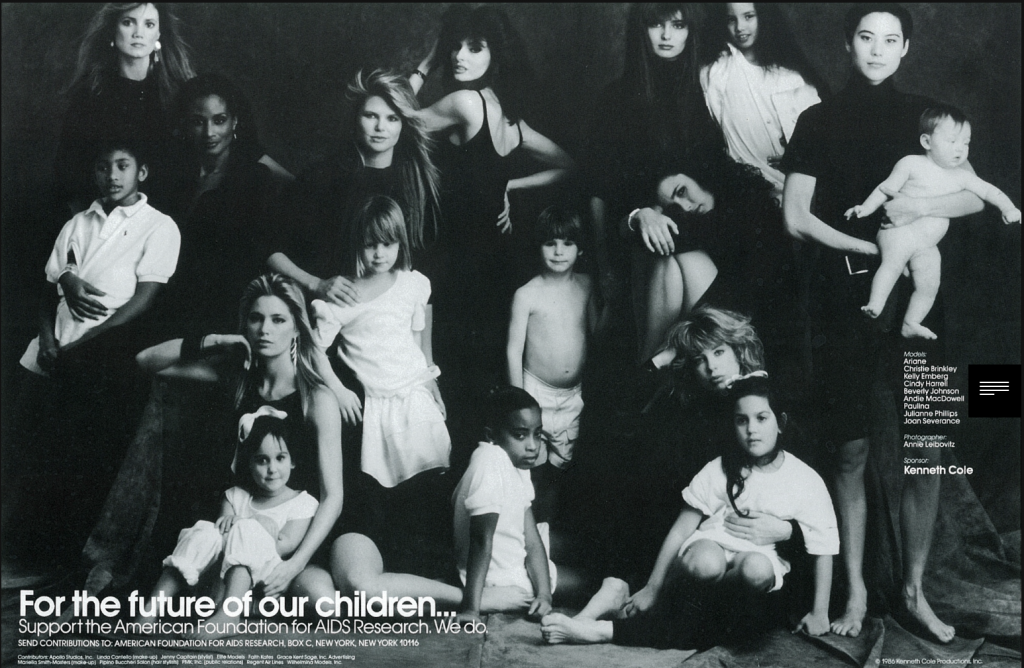
Credits: The Kenneth Cole Advertising Archive
NATHALIA: We are in the heart of Midtown. On the very top floor.
We have a 360 degree view of the city: To the north, Central Park, and to the south, the Empire State Building
EMILY: Kenneth is welcomed to the stage to a burst of applause. He is wearing a gray suit, jeans and white sneakers with multicolored shoelaces.
EMILY: He talks about how fashion can be used for social change, and why it should do so
Later, we get a few minutes on our own with Kenneth ….
He is friendly. He smiles often.
KENNETH VOICE BRIEFLY COMES UP
NATHALIA: We ask him whether 9/11 influenced his activism – Did Kenneth feel a sense of urgency to act or did he feel discouraged?
KENNETH COLE: That’s actually a good question. I don’t think anybody’s ever asked me that question. And it’s that we all feel very, very vulnerable all the time and we realize how fragile our infrastructure is, our systems, our communities, our and it makes you in some ways appreciate what you have more than you might otherwise. At the same time it makes you realize how much impact you can make. If you’re so inspired.
EMILY: Kenneth says he wants his collections to reflect the time we live in. To speak to where people are at and what they’re experiencing.
KENNETH BUBBLE
AMBI OUT
THERE IS SOMETHING YOU SHOULD KNOW ABOUT ME
NATHALIA ALCANTARA:
I kept thinking about Kenneth’s words…
But before I tell you why, there is something you should know about me.
I work in the industry.
When I was 18, I was scouted in my home country, Brazil, to become a fashion model. It was a great opportunity: I got to travel around the world and meet so many interesting people. It also allowed me to become a journalist – to pay for school, and be here… doing this podcast.
But the thing is–and you might have heard this before—the world of fashion modeling isn’t always pretty.
CONVERSATION + PHOTOSHOOT AMBI STARTS TO BUBBLE IN
It’s not only about glamor, over the top parties and shows,
Here I’m talking to makeup artist Dale Johnson while getting ready for a photoshoot, I ask him if he thinks fashion shows are glamorous
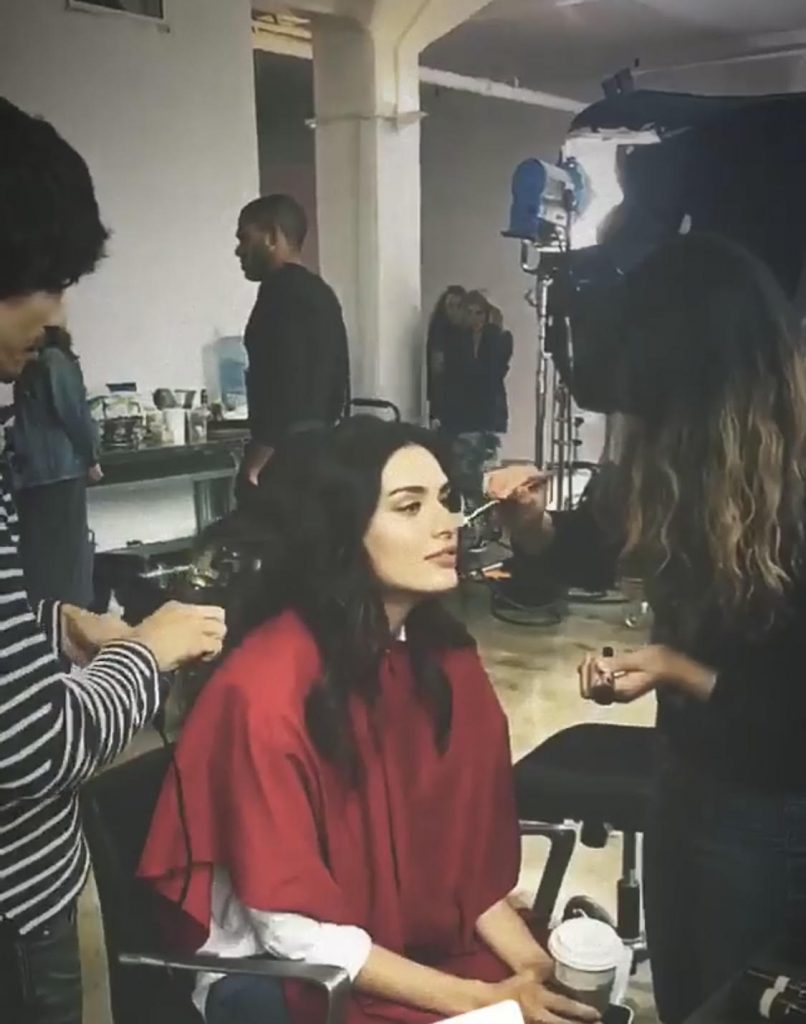
DALE JOHNSON: The glamorous thing to say is the girl walking down the runway. And the fact that every fashion show lasts about 20 minutes. Everything else is going into that. 20 minutes. Yeah
PRODUCER: What’s her ETA?
DALE JOHNSON: two minutes!
NATHALIA: Speaking of glamor
The modeling industry is highly unregulated. And I’ve witnessed how that has a huge impact on the lives of those who work in fashion. With over a decade in the industry, I have observed issues like wage theft, eating disorders, sexual harrassment, overt racism…The list goes on and on.
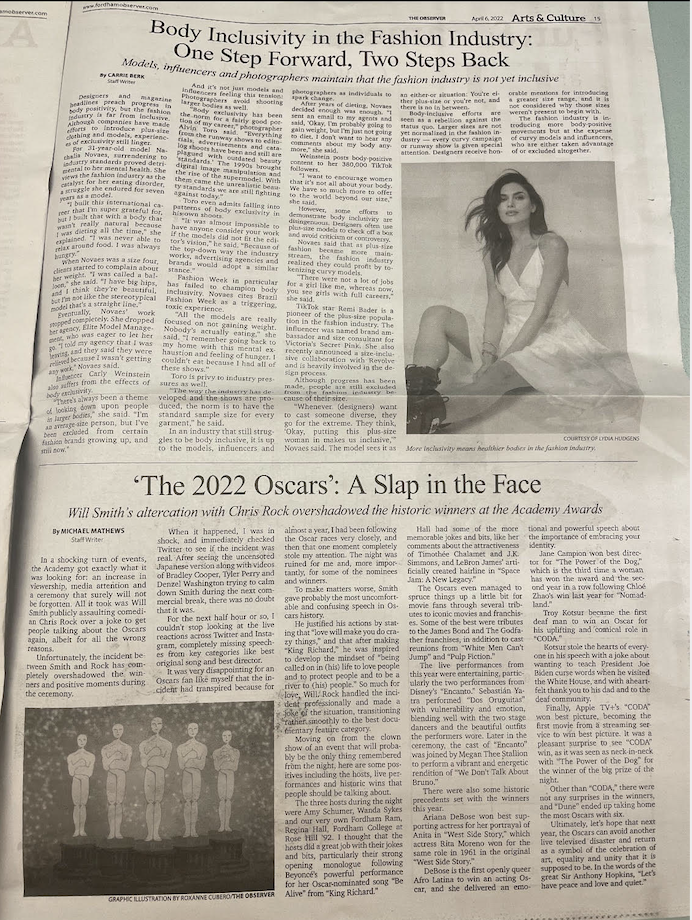
Credits: The Observer
So, when I see the fashion industry taking action on social issues, I can’t help but feel a bit skeptical…
MUSIC IN
If the industry can’t clean its own house, can it help with the world’s problems?
But I kept thinking about Kenneth Cole.
He told the Washington Post once quote unquote “With the world’s fashion press gathered in one room, to not take the opportunity to say more than just what to wear, it just seems inappropriate and wasteful and irresponsible.”
Fashion is his tool to speak – and act – about the things he deems important.
And seeing the tangible impact of his philanthropic work at the Emory event, I’ve started to look a bit differently at the industry.
I realized one thing: fashion reflects us..
And it can get get confusing – at least to me – because our world is full of contradictions. It is a place where tragedy and glamor sometimes coexist – like in the aftermath of 09/11, where there is poverty and consumerism,
And, well an unregulated and polluting fashion industry full of good intentions.
Fashion can reflect these contradictions to us.
It can also reflect *other* aspects of us: our creativity, expression…
Here is Adam Lippes again.
ADAM LIPPES: we have the Great, the great gift as designers to be able to work with beauty and hopefully create beauty.
Adam believes fashion is a refuge.
ADAM LIPPES: Even in the pandemic when you put on that incredible cashmere sweater that you’ve always loved that made you feel feel good and feel cozy or you put on a blouse Finally, at least you felt pretty or, you know, their passion has a lot of ways to, for people to escape in challenging times.
MUSIC OUT
Of course, the fact that fashion plays these roles does not make any of the industry’s issues less real.
But, it helps shed light on one thing:
Fashion can tell us a lot about us.
The good, the bad, and everything in between – and well, I think it’s worth listening to it.
So, the night we talked to Kenneth, and I witnessed the impact of his work, I left a little bit less skeptical…
And a bit more hopeful about the fashion industry.
THE PANDEMIC GATEWAYS TO A NEW FASHION TREND
NEWSREEL: Now, to the pandemic and yet another disturbing milestone. More than two years in, the U.S. is poised to surpass one million covid-19 related deaths this week.
In California, the notoriously busy highways are nearly empty. The hussle and bustle of New York is at a standstill.
(GOVERNOR CUOMO) This is not life as usual. And accept it, and realize it, and deal with it.
EMILY EKSHIAN: Fashion also took a hit during the pandemic, even, for our faces.
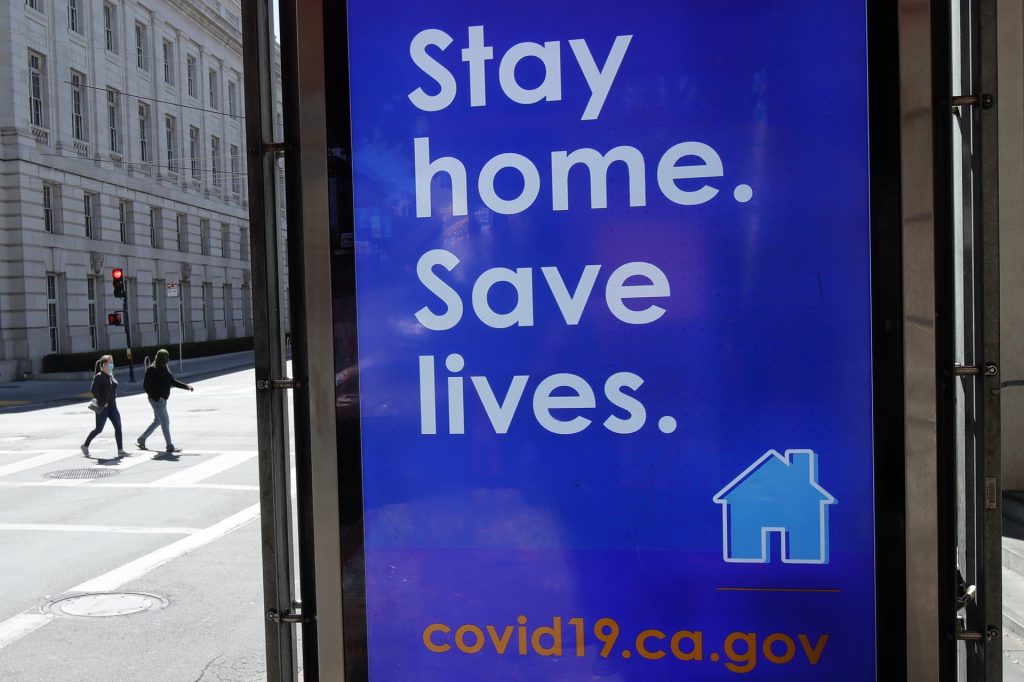
DICK PAGE: People are saying I just can’t wear lipstick anymore.
EMILY: Dick Page is one of the most sought after makeup artists in the world. Mask mandates created a huge dilemma for him.
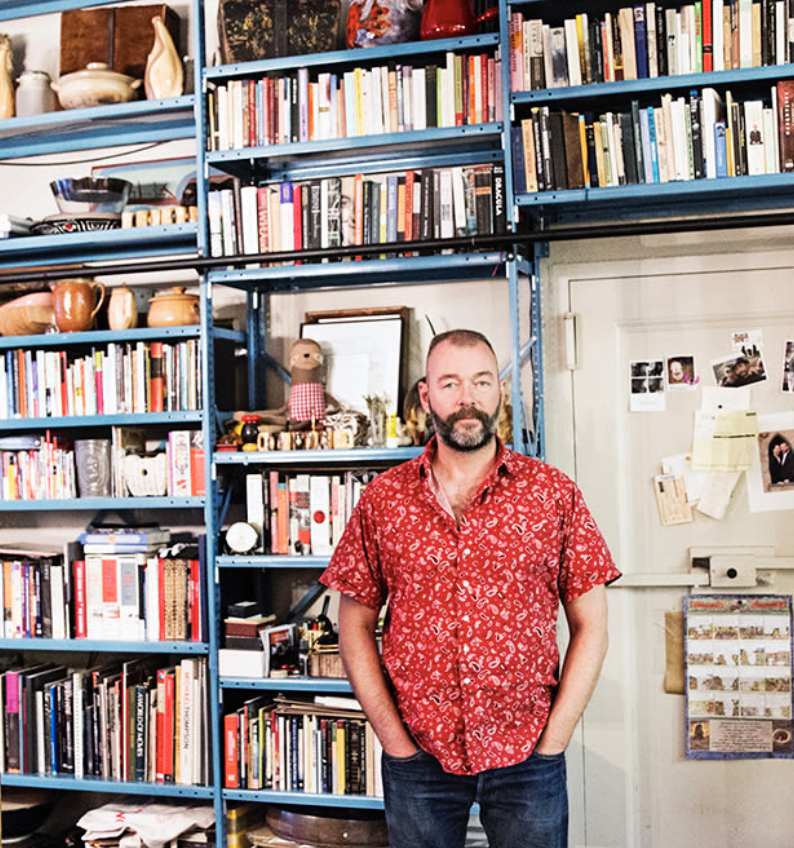
DICK PAGE: Because even though makeup for a lot of people is wardrobe is part of as part of getting dressed and presentation for yourself, whether you’re just putting on a little bit of mascara, or and putting the rest of the face on the train.
EMILY: From bare lips to sweatpants – the pandemic, the lockdowns, the isolation – they literally impacted the way we look and the way we see each other.
DICK PAGE: If you think about the last time you may have personally seen a roomful of actual faces, like entire faces. It’s quite strange.
EMILY: 2020 – the first pandemic year – was the worst year in the history of luxury retail.
Global sales fell by 23%. And the industry relied more heavily on e-commerce and virtual fashion.
Here is Ben Widdicombe again.
BEN WIDDICOMBE: Well, I certainly think that the retail forces and the relative importance of social media have diminished Fashion Week enormously, that all the buzz has gone online, versus the in person events.
EMILY: The industry is adapting, and bouncing back.
Mega brands like Hermes and Chanel are leading the way.
NATHALIA: By the first half of 2021, revenues for some of the biggest names in fashion were up as much as 40% compared to before the pandemic.
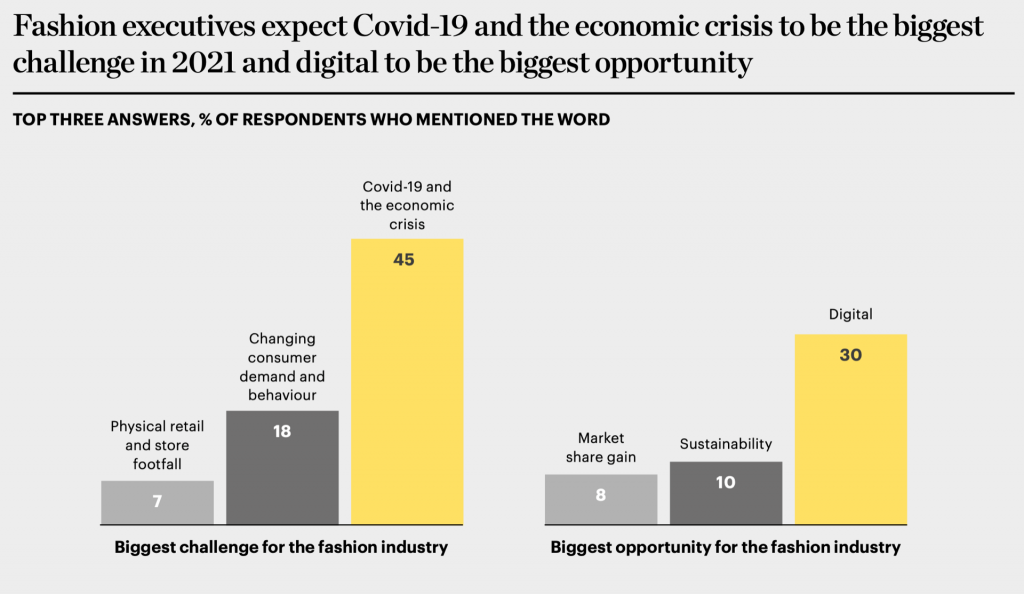
MUSIC BEAT
NEWSREEL: The biggest night in fashion, the Met Gala is back, known as the Oscars of the East. It seems fitting that this year’s theme is the golden era of the Gilded Age.
EMILY: This year, the Met Gala was back in person in May, with a theme from the Gilded Age, a time at the end of the 19th century in the United States, when economic growth and corporate giants emerged, and when high society’s fashion was showy, grand, and extravagant.
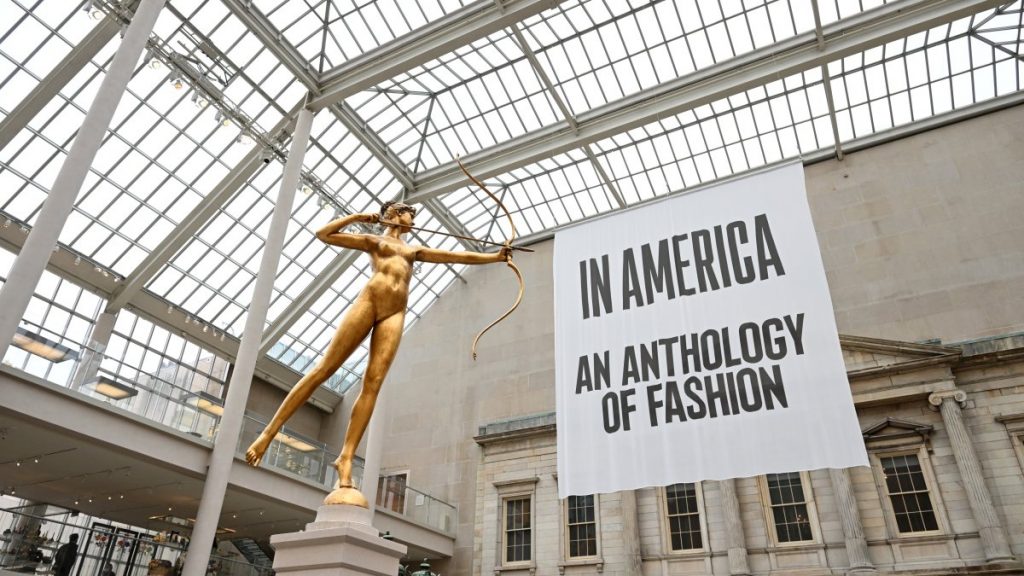
NATHALIA: Remember how hemlines got shorter when the stocks were down – back in 2001?
Now that many pandemic restrictions have been lifted so have skirts.
Here’s Kenneth Cole again.
KENNETH COLE: During covid, you know, we mainly existed in sweatpants and sneakers and loungewear, that was everybody’s wardrobe decision probably for a year or so, and then as soon as we got out, people ran out, and the heels got higher and the hems got shorter.
PAUSE
LIKE A WATCH…
MUSIC IN
EMILY EKSHIAN: Crises like 09/11 and the pandemic can impact the fashion world –
LIZ LANGE: But like all things, I mean, people are very resilient. And industries are resilient. You know, after a few years, things, sadly, but true, like or good returned to normal.
EMILY: Trends are short lived – After all, that’s the very definition of fashion – it tells us about ourselves – like a snapshot of the times –
NATHALIA ALCANTARA: Remember that tshirt everyone was wearing in Brooklyn and then stopped – the one with the ak 47 assault rifle?
Ben Widdicombe says by 2016 – 15 years after the terrorist attacks – he saw people wearing them again.
BEN WIDDICOMBE: I specifically remember seeing one on the subway about five or six years ago and being surprised like oh, that’s so someone’s wearing it again.
MUSIC IN
EMILY: There is an old saying in fashion: the “20-year rule”
It means that 20 years is usually the time it takes for a fashion trend to die, and then to become fashionable again…
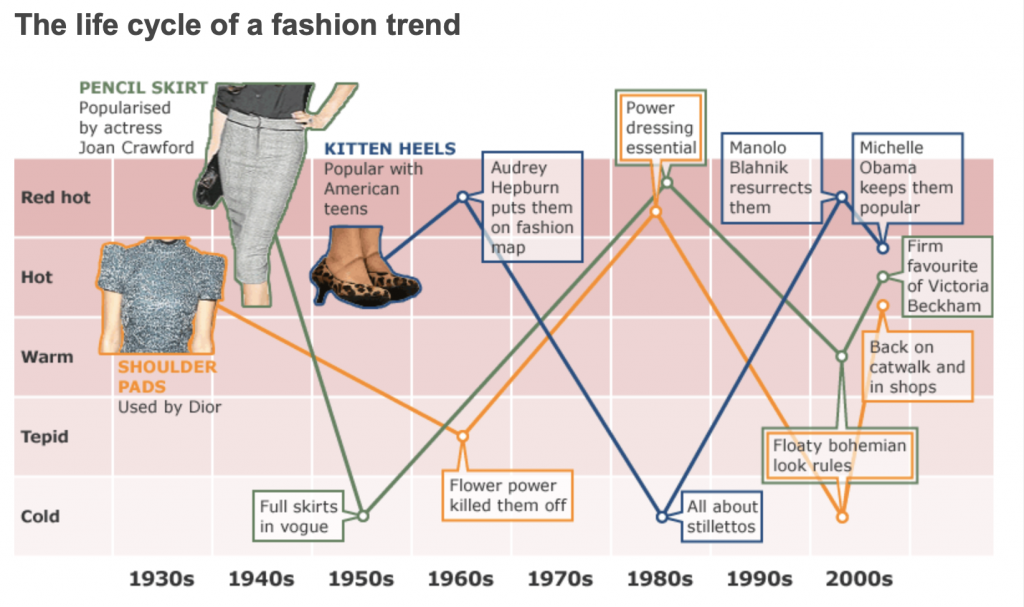
NATHALIA: Fashion moves in cycles–while it moves forward, it’s also tied to the past – like a clock face
EMILY: In 20 years, a piece of clothing can go from being the dorkiest, uncoolest, even inappropriate….To the item of the season.
NATHALIA: But just like a watch.. The pointer does not stop.
We move on.
MUSIC IN
CREDITS
NATHALIA ALCANTARA: Shoe Leather is a production of the Columbia Graduate School of Journalism. This episode was reported, written and produced by Nathalia Alcantara and me Emily Ekshian.
EMILY EKSHIAN: Joanne Faryon is our executive producer and professor.
Rachel Quester and Peter Leonard are our co-professors.
Special thanks to Columbia Digital Librarian Michelle Wilson, Professor Dale Maharidge, Chiara Eisner of the State, Michael Barbaro of The Daily, Sachin Nagpal, Carrie Berk, Michael Patras and Debrah Rapoport
NATHALIA: Shoe Leather’s theme music – ‘Squeegees’ – is by Ben Lewis, Doron Zounes (zoo nez) and Camille Miller, remixed by Peter Leonard.
Other Music by Blue dot sessions.
Our Season three graphic was created by Maria Fernanda Erives
EMILY: To learn more about Shoe Leather and this episode go to our website shoeleather.org.
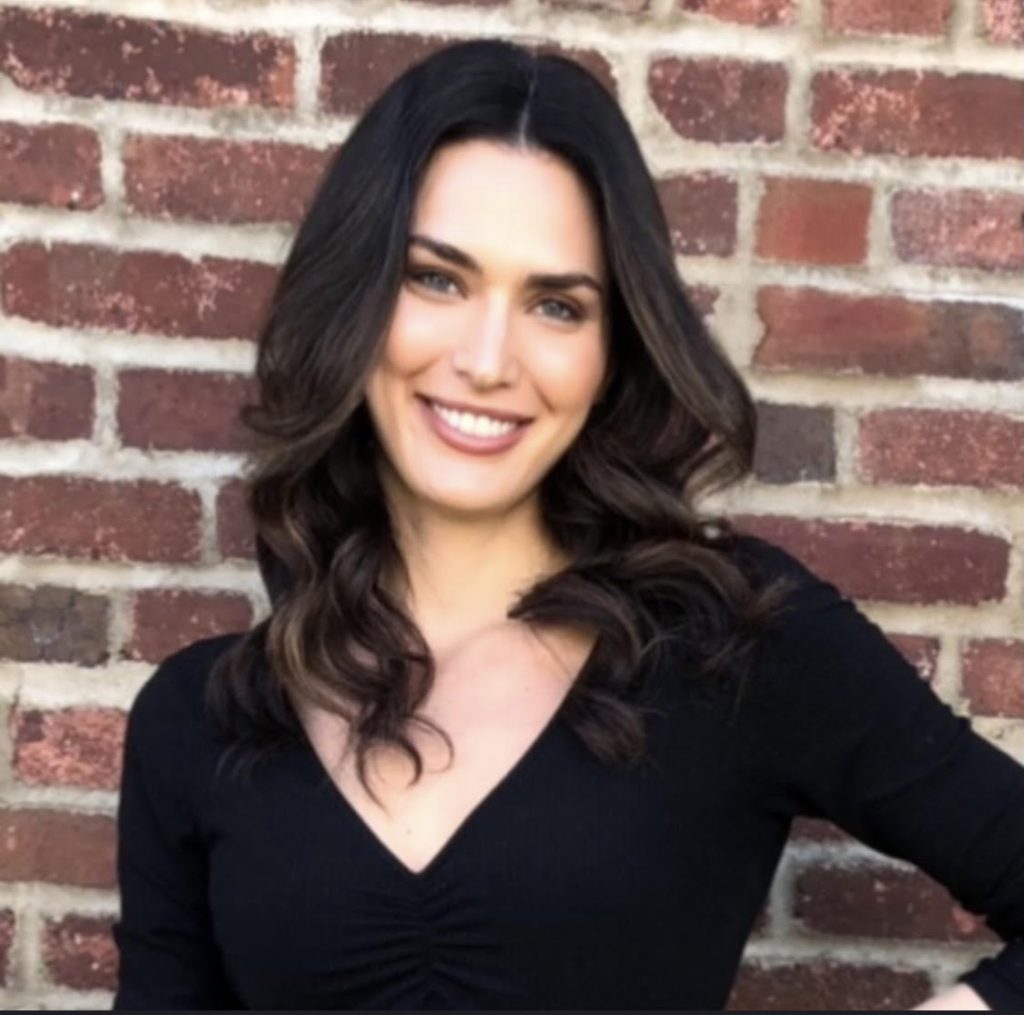
Nathalia Alcantara is a multimedia journalist from Brazil, and a graduate at Columbia Journalism School. She is based out of New York, NY, and her work has been featured in California Magazine, Columbia News Service, EmpowherNY, Universo Online and Marie Claire Brazil. Additionally, she has worked as an audio producer at The Juggernaut Interviews podcast. Connect with her on LinkedIn ( https://www.linkedin.com/in/nathalia-alcantara-b21327169 ) or email her at nathalia.alcantara@columbia.edu

Emily Ekshian graduated from Columbia University Graduate School for Journalism in May 2022, and will be joining a full time reporting fellowship at the New York Center for Foreign Policy Affairs based in Washington D.C. Emily is interested in covering topics ranging from culture, law and politics and how sectors of society like fashion, entertainment and financial systems are affected by social phenomena and crisis. Connect with her on LinkedIn (linkedin.com/in/emily-ekshian-ab06711b2) or email her at eve2104@columbia.edu

